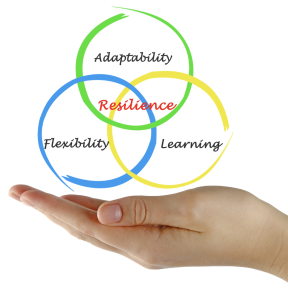 Resilient leaders are the ones who can bounce back after being faced with a difficult challenge.
Resilient leaders are the ones who can bounce back after being faced with a difficult challenge.
These challenges could occur from a downturn in the economy, a defective product, bad customer experiences, or possibly unsustainable profitability.
The key to being resilient is to recognize that the situation is most likely temporary and to recognize the positives, if any.
It is critical that resilient leaders try to acknowledge what is going right within the company because this positive attitude will then funnel through the whole organization.
When a leader instead shows fear or negativity, morale will usually go down and fear creeps in.
This in turn will negatively impact productivity.
The expression “fake it till you make it” may seem very rudimentary but by exuding a more upbeat persona when faced with a dilemma, the leader shows their confident side which makes staff feel more encouraged.
Resilient leaders do see these times as opportunities to try new things. 
It may be that these projects were shelved in the past due to lack of time or resources but can now be revisited.
This is also a good time for organizational changes (not necessarily layoffs but shifting employees and providing more training) and streamlining processes.
More time and patience can be given to these initiatives now that will benefit the organization in the long run.
During these tough times, self-care is important for leaders and is often overlooked.
When anyone is handling a tough situation, bad habits like over-eating or drinking too much can occur.
 It is imperative that everyone, especially leaders, make time to take care of themselves.
It is imperative that everyone, especially leaders, make time to take care of themselves.
This is not just about exercising but also emotional and possibly spiritual self care.
Many people also tend to withdraw from others and/or not admit they are facing a tough situation.
Being active in the community and family life are good outlets too.
Think back to a time when you saw a company flounder.
How did the CEO and other senior leaders in the company react to this difficult situation?
If they demonstrated resiliency, how is the company doing today?
What lessons can you learn from this example and use in your own company or situation?
